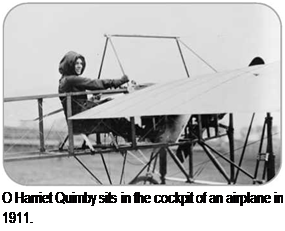Pilot
|
A |
pilot is the person who controls an aircraft. The name “pilot” was originally given to someone who steers a ship. Pilots fly everything from large airliners and fast military jets to airships and balloons. They also fly light aircraft, business jets, cargo planes, crop dusters, search-and-rescue helicopters, air ambulances, and other aircraft types. Requirements for a good pilot are sharp eyesight, intelligence, and calm judgment. All pilots must be physically fit and mentally alert.
Pioneers and Celebrities
The first pilots taught themselves to fly and were often their own mechanics as well. The world’s first aero club was set up in France in 1898—five years before the Wright brothers’ famous 1903 flight. The Aero Club of America was founded in November 1905. Among early aviators were Glenn Curtiss—who flew his June Bug airplane for the first time in 1908—and Louis Bleriot, the first airplane pilot to fly from France to England, in 1909. The world’s first international aviation meet, at Reims, France, in the summer of 1909, saw just twenty – three airplanes flying.
During World War I (1914-1918) airplane pilots earned a reputation for gallantry and chivalry. Fighter “aces,” such as American Captain Edward V. Rickenbacker, dueled in the skies. The first African American combat pilot, Eugene Bullard, was denied entry into the U. S. Army Air Corps on racial grounds and flew instead with the French Flying Corps. After the war, barnstormers (stunt pilots) thrilled crowds across the country with aerobatic shows. Women also took to the air. Ruth Law, an American pilot, was the first woman to loop the loop, in 1916. Bessie Coleman was the first female African American pilot.
О Eugene Jacques Bullard, the first African American combat pilot, flew for France during World War I. He later fought with the French Resistance in World War II and returned to the United States after being wounded.
![]()
![]()
|
 EARLY WOMEN PILOTS
EARLY WOMEN PILOTS
The world’s first ever female pilot was Elise Raymonde Delaroche of France, who received Pilot’s Certificate Number 36 in March 1910. She was killed in an airplane accident in 1919. Harriet Quimby, the first female American pilot, gained her pilot’s license in August 1911. On April 16, 1912, Quimby became the first woman to fly an airplane across the English Channel between England and France.

Men and women pilots flew stunts for movies—racing trains and flying under river bridges—and competed in air races. Record-breaking flights turned pilots into celebrities. Charles Lindbergh (the first pilot to fly solo across the Atlantic Ocean, in 1927) and Amelia Earhart (the first woman to achieve this feat, in 1932) were as famous as movie stars. Ruth Nichols was the first woman pilot to land in every one of the states of the United States. Clyde Pangborn and Hugh Herndon flew nonstop across the Pacific Ocean in 1931, and Wiley Post circled the world solo in 1933.
О In 1929, James H. Doolittle (1896-1993) made the world’s first instruments-only takeoff, level flight, and landing. In 1932, he set a world speed record for land planes. During World War II, he led the first bombing raid on Tokyo, Japan, and later commanded the Eighth Air Force in Europe and on the island of Okinawa, Japan.

THE TUSKEGEE AIRMEN
Until 1940, African Americans were not allowed to fly in the U. S. military. In 1941, however, the U. S. Army Air Corps formed an all-black unit in Tuskegee, Alabama. Ground crew, navigators, pilots, and weapons crews were rigorously trained for combat at the Tuskegee Army Air Field (TAAF) and elsewhere in the United States. By 1946, almost 1,000 pilots had completed training. About 450 of these men served overseas during World War II. The Tuskegee airmen, as they became known, achieved an outstanding record, gaining respect in an era when prejudice, segregation, and lack of opportunity were the norm for African Americans. They flew thousands of missions, destroyed over 1,000 enemy aircraft, and received hundreds of medals, including more then 150 Distinguished Flying Crosses.
|
|
|
![]()











